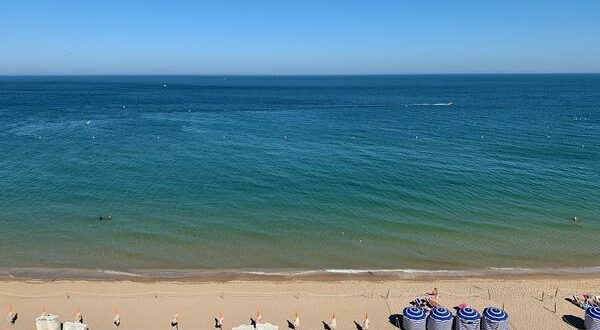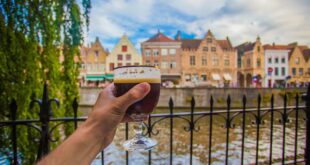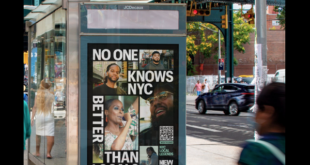[ad_1]
Parisians tend to swoon at mentions of Normandy. That I was planning to spend a week there exploring came up in pleasantries a few times during my brief stopover in the French capital, and the response was typically the same, “Ahh, La Normandie! So beautiful!”
Americans, on the other hand, tend to have Normandy permanently filed in our collective consciousness as “Normandy, WWII Allied Invasion of Beaches at. . .” A few were familiar with Mont St. Michel, one of the region’s top visitor attractions, but beyond that, there wasn’t much further recognition when I mentioned some of my planned stops at Cherbourg, Caen, and Deauville.
To many outsiders, France appears rather homogenous, but it is in fact a diverse country of distinctive regions, and Normandy is among its most distinctive and outward-facing. Named for the Vikings (“Norse Men” or “North Men”) who raided and settled the region from the 9th century, the region was noted for centuries for maintaining the outward-facing conquest bias of the Vikings, most famously with the last successful land invasion of Britain in 1066.
Cherbourg-en-Cotentin
It is difficult to imagine the global ambitions of those Normans of the Middle Ages while on the train from Paris, traversing placid green fields and old growth forests enroute to the rocky outcrop of Cherbourg on the Cotentin Peninsula.
Cherbourg, with its medieval seawall, has been a port city for centuries. It was the continental port of call for British and German ocean liners from the early 20th Century, and the historic terminal and railway depot at the pier are now the Cité de la Mer maritime museum, where it’s not difficult to while away an entire day.
There’s an exhibit dedicated to Titanic and other ocean-going liners, as the museum takes up space in the 1913 vintage terminal. The space is still used for modern cruises and ferries, and I watched an overnight car ferry from Ireland pulling into its berth while reading some of the outdoor displays. The Titanic exhibit focuses on the passengers who boarded tenders at Cherbourg to board the ship, which anchored just inside the seawall (the berth wouldn’t be dredged to accommodate large liners until some years in the future).
Visitors can also poke through the retired French nuclear submarine Redoubtable, and peer into the spaces where the nuclear reactor and nuclear missiles were once housed, before heading upstairs to see exhibits on aquatic life and ocean conservation. There’s also a quite good restaurant where I dined on moules frites (steamed mussels with fries) served Norman-style slathered, with melted camembert cheese and bacon lardons.
At the inner harbor, I watched French fishing boats make their way through the drawbridges on their way out to harvest their catch. There’s even a well-known umbrella factory that offers tours—Cherbourg umbrellas are known for their fine construction.
Caen and Cabourg
In Caen, I walked through the historic city center, charmed by a riverside street named for Rosa Parks, and an 11th century castle built by William the Conqueror. Then, it was a lazy drive through rolling apple orchards and cow pastures to the coastal town of Cabourg, where holiday accommodations line the silty-sanded beach on the English Channel, which is called “La Manche” in France.
The Grand Hotel Cabourg sits right on the boardwalk and I was delighted to find my room overlooking the sandy beach and its trademark blue-and-white striped umbrellas and beach cabanas was right next to the one favored by writer Marcel Proust, who often retreated to the hotel from Paris to work.
On the landside of the grand hotel is a garden and park with an early 20th Century carnival atmosphere amongst the traditional white-and-brown striped Norman architecture of the town. Even in early September, it was still pleasantly warm, with bright sunshine tempered by a bracing sea breeze.
Deauville/Trouville
Next, it was on to Deauville, where Coco Chanel purported to have gotten the idea for her first line of womenswear made of jersey fabric, based on the free-moving clothes she noticed on fishermen on the beach here. Deauville’s Beach is wider and less silty than that at Cabourg—and it’s closer to Paris, making it a rather more trafficked beach destination, with outposts of Louis Vuitton, Hermes, and of course Chanel lining the avenues a block off the boardwalk.
Deauville Beach has long been popular with the Hollywood set—the Deauville American Film Festival is one of the few film festivals where the screenings are open to the public. The beach itself has significantly preserved (if underused) bathing facilities, where the rails still list the names of film stars who once graced their environs. Also here is an Olympic swimming pool, constructed for the Paris games of 1924.
The hotel to stay at here is in neighboring Trouville—the Cures Marines, part of Accor’s MGallery collection. It’s a 1907 palace that has recently been refurbished to pay homage to its original intent as a seaside resort. True to the name, seawater is heated and pumped into basement swimming pools for guests to take the “cure” directly from the comfort of the hotel, even though the beach itself is just steps away.
Deauville is a lovely central spot to explore the rest of the region of Calvados. Nearby, visitors can visit the Calvados Experience, which walks through the process of making the apple brandy from the orchards of Normandy. For a change of pace, stop through nearby Le Havre, which was heavily bombed during the Second World War and as a result has architecture that is almost entirely modern. It too has a Transatlantic shipping tradition, serving as the terminus for the French Line (the reclaimed prow of a French Liner is memorialized at the waterfront), but it’s still a sprawling commercial port with no benefit of a museum such as Cherbourg’s.
Further still up the coast from Le Havre are the cliffs at Etretat—France’s answer to the white cliffs of Dover. It’s best to start out early—the cliffs are most spectacular in the early morning light, and parking in the small village fills up quickly with sightseers, particularly on weekends.
The Pass Sanitaire
France currently requires a pass sanitaire, or health pass, to access most public indoor venues, regional trains, and domestic flights. The vaccine card provided by the US Centers for Disease Control is not recognized in France, so travelers, have three options: they can send a copy of their CDC card to the French authorities prior to travel to have it converted into a French covid vaccine certificate, they can get covid tests for a fee (generally about 30 Euro) every 72 hours at French pharmacies, or they can request a pharmacist convert their American CDC card to a French vaccine certificate.
For me, it was all three. I e-mailed my CDC card and application, but the backlog of requests wasn’t cleared by the time I arrived in France. I had read certain pharmacies in Paris would issue vaccination certificates, but the ones I tried all said they couldn’t, so I got a test instead. I had similar luck in Cherbourg, and it was finally in Caen, that a pharmacist agreed to issue a French covid certificate—which is now valid in perpetuity not only in France but is also recognized by every member state in the European Union.
The Takeaway
It’s now easy to understand the Parisians’ gasps of “Ah, La Normandie!” This charming region of France offers much more than battlefield navel-gazing—it’s a peek into a vibrant, ancient culture in tranquil, bucolic seaside and countryside surroundings with a proud, welcoming populace to people the experience of curious travelers.
For the latest insight on travel to France and around the world, check out this interactive guide:
For the latest travel news, updates, and deals, be sure to subscribe to the daily TravelPulse newsletter here.
[ad_2]You can read more of the news on source
 Travelsmart
Travelsmart



